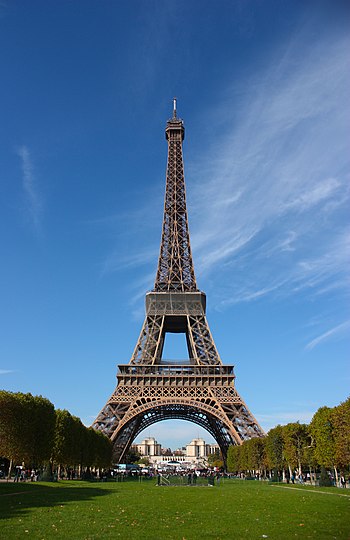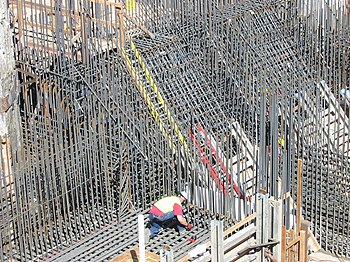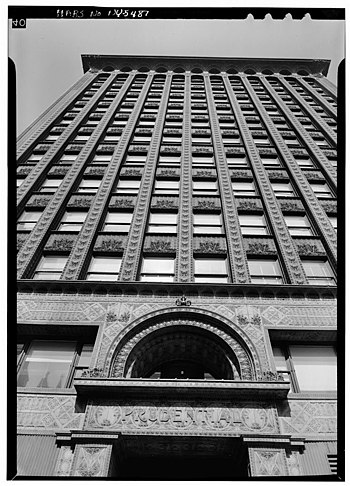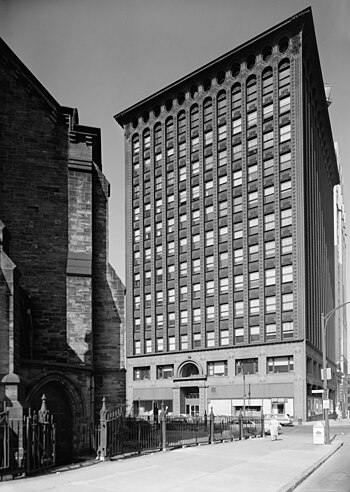Architecture and the Industrial Revolution
| Art Appreciation and Techniques (#ART100) | |
|---|---|
| Art and architecture | Overview | Introduction | Methods and materials | Architecture in China and the Far East | Cross-cultural influences | Architecture and the Industrial Revolution | Modern architecture | Postmodern and contemporary architecture | Green architecture | Summary |
Beginning in the 18th century the Industrial Revolution made fundamental changes in agriculture, manufacturing, transportation and housing. Architecture changed in response to the new industrial landscape. Prior to the late 19th century, the weight of a multistory building had to be supported principally by the strength of its walls. The taller the building, the more strain this placed on the lower sections. Since there were clear engineering limits to the weight such load-bearing walls could sustain, large designs meant massively thick walls on the ground floors, and definite limits on the building's height.
Forged iron and milled steel began to replace wood, brick and stone as primary materials for large buildings. This change is encapsulated in the Eiffel Tower built in 1889. Standing on four huge arched legs, the iron lattice tower rises narrowly to just over 1000 feet high. When I visited the tower, I was surprised to find a wooden railing at the top (supported by iron bars) and carved with innumerable names! The Eiffel Tower not only became an icon for France but for industry itself heralding a new age in materials, design and construction methods.
In America, the development of cheap, versatile steel in the second half of the 19th century helped change the urban landscape. The country was in the midst of rapid social and economic growth that made for great opportunities in architectural design. A much more urbanized society was forming and the society called out for new, larger buildings. By the middle of the 19th century downtown areas in big cities began to transform themselves with new roads and buildings to accommodate the growth. The mass production of steel was the main driving force behind the ability to build skyscrapers during the mid 1880s.
The people in Midwestern America felt less social pressure to conform to the ways and styles of the architectural past. By assembling a framework of steel girders, architects and builders could suddenly create tall, slender buildings with a strong steel skeleton. The rest of the building's elements - the walls, floors, ceilings, and windows were suspended from the load-bearing steel. This new way of constructing buildings, so-called column-frame construction, pushed them up rather than out. Building design in major urban centers now placed a premium on vertical space. Like the flying buttress of the 14th century, the steel weight-bearing frame allowed not just for taller buildings, but much larger windows, which meant more daylight reaching interior spaces. Interior walls became thinner creating more usable floor space.
Because steel framing had no precedent, its use would rewrite the rules of design and engineering of large buildings and along with them a new formal aesthetic. Architect Louis Sullivan's twelve-story Prudential Building in Buffalo New York is an early example of column framing. Built in 1894, its tall, sleek brick veneer walls, large windows and gently curved top pediment ushers in a new century with the modern style of the skyscraper.
For all of its new technology and design innovations, The Prudential Building still holds some forms from the past. A large arch hovers over the main entrance and the brick façade has extensive ornamentation.
| Both photos: Louis Sullivan, The Prudential Building (also known as the Guaranty Building), 1894, Buffalo, NY | ||



